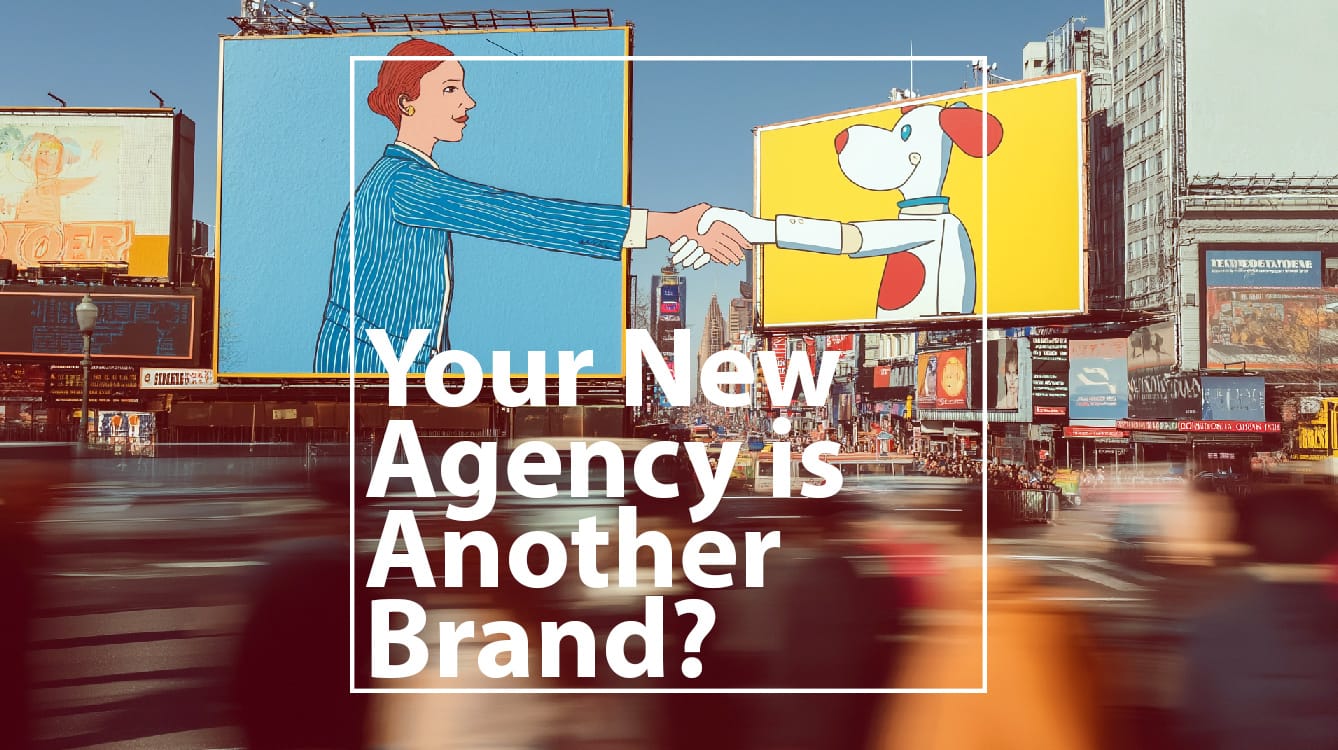If you’re a marketer, ask yourself, how strong is your brand? So strong you could use it as a calling card to make another brand’s advertising?
A recent deal between beverage brand Liquid Death, known for a cult following and unique advertising – and wireless carrier Boost Mobile to create a new advertising campaign does exactly that. This wasn’t a normal brand collaboration, instead Liquid Death essentially acted as Boost’s creative agency, transferring its own brand point of view to another category.
The result was a horror spoof campaign called ‘Cellphone Bill’ featuring actor Tony Cavalero, of the ‘Righteous Gemstones’, as a deranged embodiment of hidden wireless fees in a ‘Silence of the Lambs’ twist. However, the ad itself is only one output from this deal, the other being a provocation on where modern agencies sit within a rapidly changing advertising landscape. Often accused of talking about the importance of brand, without practicing what they preach – Liquid Death’s latest move may signal new consequences are emerging.
Not Your Typical Brand Collaboration
Brand collaborations are nothing new, but they usually don’t have this tone or tenor – instead manifesting as co-branded products or promotions. Liquid Death has done collaborations with brands from Yeti (‘The Casket Cooler’) through to Depends (‘The Pit Diaper’). Red Bull’s historic content house may evoke similarities to Liquid Death and Boost, but the focus still lay on selling Red Bull, with collaborators like GoPro along for the ride. Alternatively, all the way back in 2015, Newcastle Brown Ale’s ‘Band of Brands’ Super Bowl stunt crammed 37 brands into one crowdsourced ad. While the spot was ‘crowd funded’ amongst brands, it was a satire on big game advertising still focused in the end, on promoting itself (and produced by Droga 5).
This new collaboration is different, as it involves a brand as a service provider. It shows how modern brand strength can be transferred, converted and sold with the creative philosophy of the brand stepping in where an agency’s business and philosophy would traditionally sit. In an age of ‘in house studios’, brands look increasingly able to sell more than their own products, as the campaign was planned, produced and shot by Liquid Death. Liquid Death’s VP of Marketing noted that ‘this campaign brings Liquid Death creative to the wireless world for the first time’ – a quote that wouldn’t sound out of place if it was referring to an advertising agency.
How Did We Get Here? Why Now?
So how did we get to the point where brand agencies can emerge? The potential may have existed as long as well built brands have. Brands like Liquid Death have spent years putting a bold position and creative tone into practice against a traditional and staid category. Its advertising builds fans, not just customers and its growth has shown that its philosophy works.
This success creates a new kind of credibility. If a brand’s marketing can do this for my own brand, who’s to say it can’t do it for someone else. Boost’s marketing lead said of the deal, ‘We’ve been big fans of Liquid Death’s creative approach… and knew they’d channel that same energy to reach our target audience.’ The transitive power of creativity has always worked for advertising agencies, why can’t it work for advertisers themselves? Beyond applying creativity, modern agencies lack the ability to fully relate to a client’s reality in a way that other clients can.
However, this shift can’t just come from the power of well built brands alone. The shift to inhouse capabilities and the democratization of creativity outside of traditional agencies may have a lot to do with it. Most importantly though, is the gap that advertising agencies have created to let this happen.
The Existential Angst of the “Cobblers’ Shoeless Children”
No one has historically spoken louder about the transformative power of creativity and the importance of brand than large creative agencies. However, you wouldn’t be able to tell it from the modern agency landscape. Agency consolidation has reduced storied advertising agency brands into shorter, more concise acronyms. The metaphorical ‘Cobblers’ Children’ of creativity have been left shoeless. Unique strategic and creative heritage has been shunted away in favor of efficiency and technological innovation. This same innovation has often left larger agencies in an existential crisis, defining what they are while the world around them changes.
This existential crisis didn’t happen overnight. As Ogivly’s Rory Sutherland once pointed out, advertising agencies have shifted from selling output to selling time and in the process became ‘lap dogs’ instead of ‘working dogs’. As clients are pushed to tighten budgets and deliver impact, the FTE model has shifted to project work and new entrants. A market whose behemoths ran on committed resources and ‘deeper relationships’ has been left flat footed. Amongst this introspection to recover, smaller agencies, novel working models and new entrants are growing – it’s an exciting time to be an agency, if you weren’t already an agency.
Everything is an Agency Now, Except Agencies
Brands aren’t alone in stepping into the agency gap – instead it’s a busy space many are already familiar with. From in-house offerings, 82% of large advertisers in the US reported having some type of in-house agency in 2023, to the previous encroachment from consulting firms, media owner studios and tech platform creative solutions – many different offerings have had the potential to be a client’s agency.
Each brings its own offering to clients looking for new ways to think and grow. However, brand agencies are uniquely positioned – arguably the next evolution of in-house teams turned outside to find further opportunity, with the proliferation of in-housing has created potential for continued growth. Additionally, the peer / supplier relationship is different from others, as a brand marketer can claim a deeper understanding of how other brands work. This authenticity, coupled with clear philosophy demonstrated in its own output makes brand agencies attractive for marketers looking for something different.
Can Big Agencies Reclaim Their Heritage?
Liquid Death’s success in exporting their brand should serve as a wake up call for how agencies can operate, but the route back to greater relevance isn’t new. Instead it involves several simple truths that are difficult to execute. Agencies, especially those with scale and heritage have to:
- Differentiate – Showing why they’re different beyond the word salad of consolidation and generic philosophy. The larger the agency, the harder this is – but the bigger the potential platform to put that philosophy into practice in the world.
- Show Outcomes – Advertising effectiveness is a variable truth for many agencies – used when convenient and hidden behind the sparkle of creativity and craft when not. In a world where more agency suppliers are able to talk about their business impact, agencies have to do more than pay lip service to creativity or show awards.
- Build the Agency Brand – Why should someone else trust you with their brand if you can’t take care of your own? Large agencies neglect themselves at the cost of clients. Putting your philosophy on show for yourself has to be part of demonstrating why that philosophy scales. Turning the transitive power of creativity inwards is the only way to prove that you can apply it elsewhere.
- Shift from a Zero Sum Game – Agencies have to move to true collaboration, welcoming new ways of working that may even entail further integrating efforts from in-house agencies. A battle for scope may not be one that agencies can completely win anymore, vs. taking a position of truly collaborative leadership.
Large agencies hold the resources and scale to push back against the threats they face, but also face disproportionately high barriers to putting a solution into practice. As smaller, independent agencies continue to grow, deals like Liquid Death’s may not hurt all agencies equally – with scale equating to greater risk while smaller players can adapt and compete.
While the genie can’t be put back in the bottle, greater threats can push agency owners to think more creatively about how to offer clients the support they’re seeking from a wider range of sources. If they can’t, we shouldn’t be surprised when clients not only look elsewhere, they look amongst themselves.





